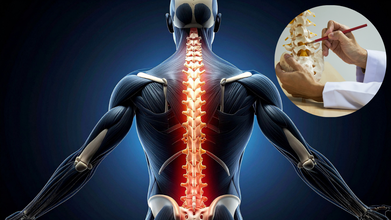- Health Conditions A-Z
- Health & Wellness
- Nutrition
- Fitness
- Health News
- Ayurveda
- Videos
- Medicine A-Z
- Parenting
- Web Stories
US FDA Recalls Broccoli Amid The Risk Of Listeria Outbreak

Credits: Canva
The US Food and Drug Administration (FDA) issued a warning for broccoli sold at Walmart and recently has elevated the risk for the same, This has been the highest recall of FDA, said the reports. The FDA said, "This advisory is being initiated due to possibility of contamination with Listeria monocytogenes. The potential for contamination was discovered during random sampling by Texas Health & Human Services from a Texas store location where one of multiple samples yielded a positive test result."
What is Listeria Monocytogenes?
This is a bacterial pathogen which is responsible for listeriosis. This is a serious foodborne illness. It thrives in various environment, including soil, water, and food processing facilities and is gram-positive and rod-shaped in its nature. It can also grow at refrigeration temperature which can then infect dairy products, deli meats, seafood, and unpasteurized milk.
There was one sick individual in each of New York and New Jersey, two in Illinois, and seven in California, including the dead child. According to the CDC, they all identify as Asians.
What Does Listeria Outbreak mean?
As per the CDC, Listeria are bacteria or germs that can contaminate many food and those who eat can get infected with the bacteria. CDC mentions that it is rare, however, could be serious, though there exists steps to prevent this infection.
It is a foodborne illness caused by the bacteria L. monocytogenes. Symptoms include fever, chills, and headache. It can cause invasive illness and intestinal illness. It is also the third leading cause of deaths from foodborne illness in the US, with 1,600 people infected each year, out of which 260 die.
Symptoms often appear within two weeks of consuming Listeria-contaminated food, but can appear as early as the same day or as late as ten weeks later.
A fever, muscle aches, and fatigue are common symptoms of pregnancy.
People who are not pregnant usually have fever, muscle aches, and tiredness. They may also get a headache, stiff neck, confusion, loss of balance, or seizures.
Is It Deadly?
It is deadly because the pathogen forms a layer of biofilm on the food which makes it resistant to cleaning or disinfectants. It also persists in food production environments, and increases the risk of contamination.
What can be done to be safe?
The best way to stay safe is by avoiding raw sprouts, soft cheeses made from unpasteurized milk, refrigerated deli meats or broccoli forets, unless heated to really hot temperatures.
Are There People more at risk?
Pregnant women, persons over the age of 65, and people with compromised immune systems are most vulnerable to Listeria. This is due to the fact that Listeria is more prone to move from the gut to other areas of the body, culminating in invasive listeriosis, a serious illness.
Listeria can cause pregnancy loss, early birth, or a life-threatening infection in newborns.
Listeria frequently causes hospitalization and, in some cases, death in those aged 65 and older or with a weakened immune system.
India’s New Antibiotic in 30 Years Offers Hope Against Antibacterial-Resistant Infections

Credits: Canva
When 28-year-old Sahil Mehra* from Mumbai was at the verge of kidney failure, and running out of option, a new lifeline came to him, in form of a breakthrough medicine.
Mehra was diagnosed with a severe urinary tract infection, caused by Pseudomonas aeruginosa, which is one of the toughest superbugs known to medicine. It has a history of resisting every antibiotic available. Last-resort drugs like colistin and polymyxins also barely held the infection at bay while worsening his kidney function.
Dr Tanu Singhal, a consultant-pediatrics and infectious diseases at Kokilaben Hospital, Mumbai said, "We were running out of time," reports TOI.
It was the breakthrough of Zaynich, a combination of Cefepime + Zidebactam that the doctors had secured access to. This was India's first new antibiotic in more than three decades. Within four days, Mehra's fever subsided, and his infection markers fell, with his kidneys now stabilized. Soon, he was discharged.
A similar case is of a 36-year-old woman who was battling a malignant ear infection, caused by a multidrug-resistant-organism, that threated to spread to her skull base and brain. Despite eight weeks of antibiotics, there was no improvement. However, after a 10-day regimen of Zaynich, her symptoms eased, and the infection cleared.
Even abroad too, there have been promising results. At St Jude's Hospital in Memphis, USA, a 15-year-old leukemia patient with a life-threatening infection caused by NDM-producing E. coli recovered after 41 days on Zaynich. Before that, the patient witnessed failure of nine other antibiotics. As of now, 51 patients, worldwide, are successfully treated.
What Makes Zaynich So Different?
It is developed by Mumbai-based Wockhardt, and is now hailed as the first-in-class antibiotic. This is the first of its kind globally, in over 30 years.
It is a combination of two medicines, including:
- Cefepime: a fourth-generation cephalosporin that disrupts bacterial cell wall synthesis.
- Zidebactam: a novel β-lactam enhancer that restores and boosts cefepime’s effectiveness.
Together, they disable bacterian defence enzymes while directly targeting critical bacterial protein. There are several studies to that point towards 97% effectives against drug-resistant Gram-negative bacteria. It also includes hospital-acquired pneumonia. In the phase 3 trials, it also outperformed Meropenem, which is a gold standard antibiotic, with a 20% higher cure rate.
Why Is It Essential?
India remains one of the worst-hit countries by antimicrobial resistance, which is spreading like silent pandemic in hospitals, and communities alike.
The main concern that India and the world faces today are carbapenem-resistant Gram-negative bacteria such as E. coli, Klebsiella, Pseudomonas, and Acinetobacter. For For CR Klebsiella and E. coli, there had been some options, however, for Pseudomonas and Acinetobacter, only polymyxins worked, and that too not very effectively. This is what makes Zaynich life-saving.
Wockhardt plans to launch Zaynich in India later this year, pending approval from the Drugs Controller General of India (DCGI).
*Names have been changed to protect the identity.
World Spine Day 2025: Theme, Significance, And Origin

Credits: Canva
Every year on October 16, World Spine Day is observed. The spine is the backbone of a human, and takes care of a lot of things including movement, posture, and overall well-being. However, spinal conditions are often ignored, and with the rise of sedentary lifestyle, spinal posture is severely affected. To address these issues, World Spine Day was introduced.
World Spine Day 2025 Theme
The theme for World Spine Day 2025 is 'Invest in Your Spine'. This highlights the need to prioritize spinal health through preventive care, rehabilitation, and supportive workplace and lifestyle practices.
This day also encourages individuals to take simple steps, but stay consistent in maintaining proper posture, exercising regularly, and following ergonomic habits at work.
The theme also calls for policy makers to strengthen access to rehabilitation and education programmes, and ensure that spine care becomes an integral part of the public health sphere.
World Spine Day Origin
World Spine Day was originated in 2012. This is when the World Federation of Chiropractic (WFC) launched the day to raise awareness about spinal health and disorder. The first theme was 'Straighten Up and Move'.
This initiative also evolved into a global event with participation from health organizations and communities worldwide to promote spine health and prevent back pain. As even doctors note that most of the spinal injuries are preventable.
Significance of World Spine Day
This day aims at raising awareness about common spine problems, including back pain, scoliosis, and slipped discs. It may come as a surprise to many but in 2020, low back pain (LBP) affected 619 million people globally. LBP is also the single leading cause of disability worldwide, and the same condition that can be prevented or people may benefit form rehabilitation.
Most spinal injuries and issues could be experienced at any age, thanks to the sedentary lifestyle and bad posture. However, the age prevalence increases among the people up to 80, with the mean age at 50-55. LBP is also said to be more common in women.
What Are The Common Spinal Problems That Affect People?
Low Back Pain
Low back pain remains one of the most common reasons for missed work and a decline in daily comfort. Long hours of sitting, poor posture, and improper lifting can strain the spine and its supporting muscles, leading to stiffness, fatigue, and persistent discomfort.
Scoliosis and Other Spinal Deformities
Scoliosis refers to an abnormal sideways curvature of the spine, often developing during childhood or teenage years. While mild cases may cause little to no symptoms, severe curvature can interfere with posture, lung function, and movement, making early diagnosis and treatment essential.
Herniated or Slip Disc
A herniated or “slipped” disc happens when the soft, gel-like center of a spinal disc pushes through a tear in its tougher outer layer. This pressure on surrounding nerves can lead to intense pain, tingling, or muscle weakness, particularly in the lower back, buttocks, and legs.
Bradley Wiggins, Britain's Cycling Icon Opens Up About His Drug Addiction, Childhood Trauma, And What Helped Him Recover

Credits: Wikimedia Commons
Sir Bradley Wiggins CBE, a legend really. He is Britain’s cycling icon and the first Briton to win the Tour de France, was once the face of national pride. His victories at the 2012 Olympics turned him into a symbol of discipline and determination. But behind the gold medals and charming public persona was a man quietly sinking into trauma, addiction, and self-destruction.
“I wasn’t on cocaine the first time we met,” Wiggins recalls in a recent interview with Time. “But I was the night before.”
The admission marks how far one of Britain’s most celebrated athletes had fallen, and how complex the relationship can be between success, trauma, and mental health.
The Trauma No One Talks About
Wiggins’ journey into darkness began long before the drugs. As a teenager, he was sexually abused by his cycling coach, Stan Knight. From ages 13 to 16, what began as “training guidance” turned into years of manipulation and assault.
“He’d tell me it was for sport, that men shower together,” Wiggins said. “He’d demonstrate how to clean myself, touch me, show me what to do. That’s how it started.”
For decades, he buried those memories under medals and fame. Speaking about them for the first time in 2023 was both liberating and devastating. “It just poured out,” he said. “I’d never told anyone. When I finally did, I broke down for an hour after reading it.”
The confession triggered others to come forward—four men who said they too had been abused by Knight. It became a small but powerful #MeToo moment within British cycling.
The Descent into Addiction
Retirement from cycling should have been peaceful. Instead, it exposed the emotional void that sport had masked for decades. Wiggins turned to cocaine, a habit that spiralled rapidly.
“I was high most of the time for years,” he admitted. What began as occasional use became constant dependence. He isolated himself in hotel rooms for days, sometimes weeks. “My ex-wife, Cath, came to find me once. She said, ‘You’re going to die, Brad.’ She found 120 empty Covid-test tubes filled with cocaine residue in an Aesop bag.”
At his lowest, he ran out of money and slept on park benches. “Clapham Common. It was scary,” he said quietly. “I don’t know how I didn’t die.”
Addiction research shows that unresolved trauma dramatically increases the risk of substance use. According to mental-health experts, drugs often serve as a way to numb pain or silence intrusive memories. Wiggins’ story mirrors that pattern, a man trying to escape the ghosts of childhood abuse and the pressure of public perfection.
Hitting Rock Bottom and Finding Help
His turning point came in 2023 after a desperate plea to his son Ben, himself a cyclist. “I sent him a video, crying. I didn’t think he’d judge me. He never does.” Soon after, fellow cyclist Lance Armstrong flew him to the U.S., helped him enter rehab, and encouraged him to face his addiction head-on.
Now a year sober, Wiggins attends Narcotics Anonymous meetings and follows a strict recovery plan. He’s in what the program calls the “accountability phase,” learning to apologise, rebuild relationships, and stay honest. “I wanted to tell my story myself, good and bad,” he says.
What Happens In Childhood, Continues To Be With You
Wiggins’ memoir, The Chain, reveals how deeply abandonment shaped him. His father, Gary Wiggins, an Australian cyclist, left when Bradley was 18 months old. “I took up cycling to feel close to him,” he admits. The two met briefly when Bradley was 19, before his father’s death in 2008 after a violent assault.
Without a stable father figure, the young Wiggins was vulnerable—an easy target for a predatory coach who offered validation disguised as mentorship. “I was lonely,” he says simply. “It was really lonely.”
Even now, the emotional scars are deep. “There’s shame attached to it,” he admits. “It’s emasculating.”
Shame is a common barrier for abuse survivors, often delaying disclosure and healing. According to mental-health research, shame distorts self-perception and drives many into self-punishment through addiction or risky behavior.
“I never wanted to come across as a victim,” Wiggins insists. “I’m a victim of my own choices.” Yet, slowly, he’s learning self-compassion. “I don’t hate myself anymore,” he says. “I don’t know if I love myself yet—but I’m getting there.”
The Ongoing Recovery
Wiggins’ recovery revolves around structure, the same discipline that once fuelled his athletic career. His day begins at 6:15 a.m.; he makes his bed, exercises, tracks his sleep and nutrition using an Oura ring, and avoids alcohol entirely.
“I live like a professional athlete again,” he says. “If I drink, it might lead me back to cocaine. I can’t risk that.”
Physical activity, experts note, can play a crucial role in addiction recovery. Exercise stimulates endorphins, reduces cravings, and helps re-establish healthy routines. “Gym and cycling keep me sane,” Wiggins says. “That sense of freedom I had as a kid—it’s back.”
Today, Wiggins lives in Balham, south London. He co-parents his five-year-old daughter Ava and has repaired his relationship with his older children, Ben and Bella. “Taking Ava to school every morning is my daily joy,” he says.
He’s no longer homeless, no longer bankrupt, and has started speaking openly about mental health. “I thought about becoming a therapist one day,” he says, laughing. “I’ll probably need more therapy first.”
© 2024 Bennett, Coleman & Company Limited

